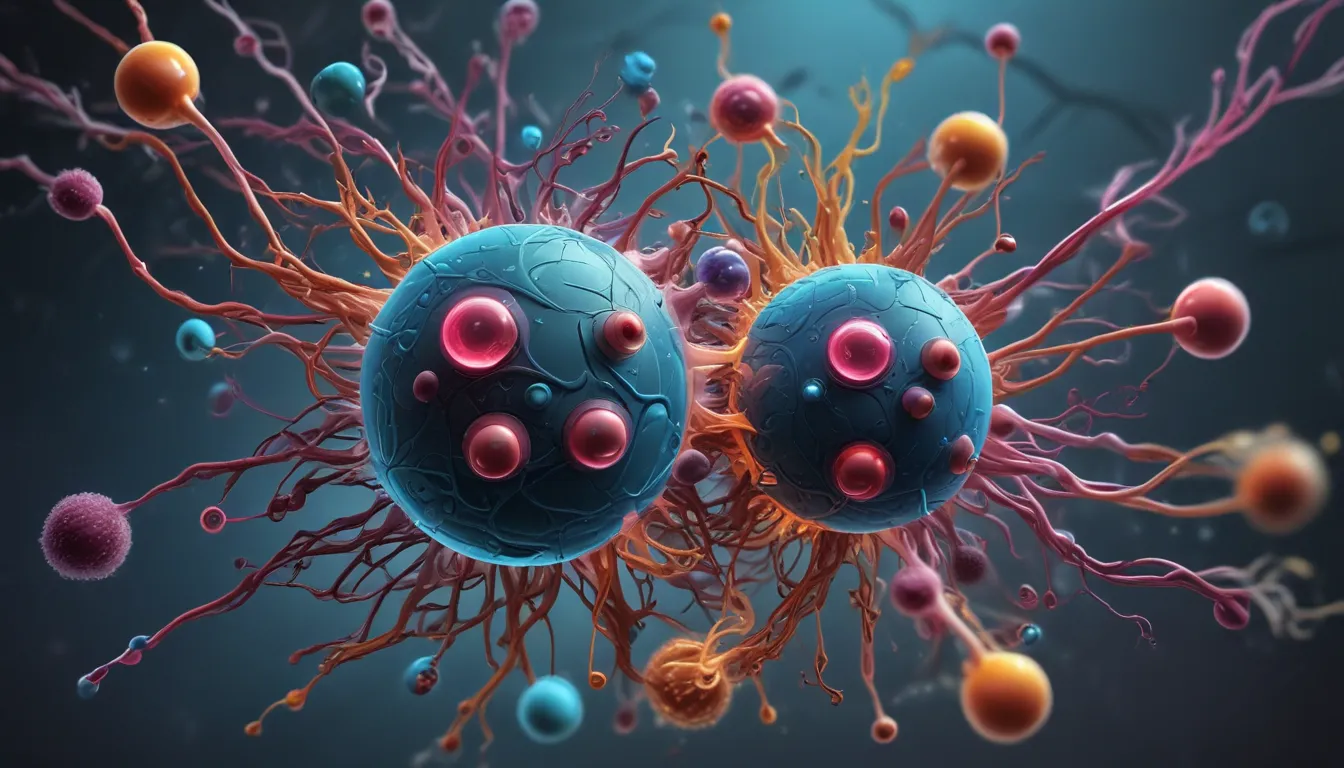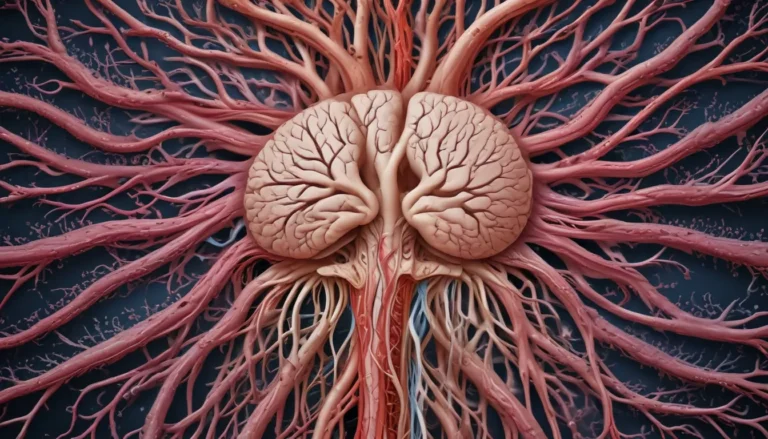A Note About Images: The images used in our articles are for illustration purposes only and may not exactly match the content. They are meant to engage readers, but the text should be relied upon for accurate information.
In the vast and intricate realm of biology, few subjects captivate the imagination quite like electron carriers. These remarkable molecules serve as the power movers of cells, shuttling electrons to generate energy essential for various biological processes. From powering cellular respiration to driving photosynthesis, electron carriers are indispensable players in sustaining life as we know it.
In this article, we will delve into 15 fascinating facts about electron carriers that will broaden your understanding of their significance and functionality. Whether you’re an avid biology enthusiast, a curious student, or simply intrigued by the wonders of the natural world, these facts will provide valuable insights into the extraordinary world of electron carriers and their vital role in supporting life.
Electron Carriers: The Powerhouses of Cells
- Electron carriers are like cellular power movers, shuttling electrons to create energy for cells. They’re crucial for processes like respiration and photosynthesis, making them essential for life.
- Some electron carriers can be double agents, creating both energy and harmful substances. But they also have superhero abilities, acting as antioxidants to protect cells from damage.
The Vital Role of Electron Carriers in Cellular Respiration
Electron carriers play a pivotal role in the process of cellular respiration, where cells convert glucose into usable energy. By transporting electrons from one molecule to another, electron carriers facilitate the production of adenosine triphosphate (ATP), the energy currency of cells.
Unveiling the Common Electron Carrier: NAD+
NAD+ (nicotinamide adenine dinucleotide) stands as a ubiquitous electron carrier present in all living cells. This critical molecule accepts electrons during the breakdown of glucose and other compounds, transferring them to the electron transport chain to drive ATP production.
Exploring Another Key Player: FAD
FAD (flavin adenine dinucleotide) emerges as another essential electron carrier in cellular respiration. It plays a significant role in oxidative phosphorylation, transferring electrons to the electron transport chain to facilitate ATP synthesis.
The Dynamic Nature of Electron Carriers: Oxidized and Reduced Forms
Electron carriers exhibit a fascinating ability to undergo redox reactions, transitioning between oxidized (losing an electron) and reduced (gaining an electron) forms. This adaptability enables them to efficiently shuttle electrons within cells.
Shedding Light on Cytochromes as Electron Carriers
Cytochromes, heme-containing proteins, serve as vital electron carriers in various cellular processes. These proteins are integral components of the electron transport chain, playing a crucial role in the synthesis of ATP.
The Versatility of Coenzyme Q (Ubiquinone) as an Electron Carrier
Coenzyme Q, also known as Ubiquinone, emerges as a versatile lipid-soluble molecule that shuttles electrons within the inner mitochondrial membrane. It plays a pivotal role in electron transport and ATP synthesis.
Electron Carriers in Photosynthesis: A Multifaceted Role
In addition to their involvement in cellular respiration, electron carriers play a crucial role in photosynthesis. During the light-dependent reactions, molecules like NADP+ transfer electrons to drive the synthesis of ATP and NADPH.
The Role of Certain Vitamins as Electron Carriers
Certain vitamins, such as vitamin B2 (riboflavin) and vitamin B3 (niacin), act as electron carriers in various biochemical reactions. These vitamins are essential for energy production and maintaining cellular health.
The Double-Edged Sword: Production of Reactive Oxygen Species
While electron carriers are indispensable for ATP synthesis, they can also contribute to the formation of reactive oxygen species (ROS) through electron leakage. ROS can have damaging effects on cells, leading to oxidative stress.
Unveiling the Heroic Role of Antioxidant Electron Carriers
Despite their potential to generate ROS, specific electron carriers, such as glutathione, serve as antioxidants to counteract oxidative damage. These molecules neutralize free radicals, safeguarding cells against oxidative stress.
Essential Role of Electron Carriers in Aerobic Respiration
In aerobic respiration, electron carriers play a crucial role in facilitating the transfer of electrons during oxidative phosphorylation. This process culminates in the production of a substantial amount of ATP, serving as the primary energy source for cells.
Chemical Modifications of Electron Carriers: Regulating Activity and Function
Electron carriers can undergo chemical modifications like phosphorylation or acetylation, which regulate their activity and function. These modifications ensure precise control over cellular respiration and energy metabolism.
Beyond Respiration and Photosynthesis: Electron Carriers in Biochemical Pathways
Apart from cellular respiration and photosynthesis, electron carriers participate in various other biochemical pathways, including fatty acid oxidation, amino acid metabolism, and the pentose phosphate pathway, showcasing their versatility in cellular processes.
The Consequences of Malfunctioning Electron Carriers
Disruptions in the electron transport chain and electron carriers can lead to mitochondrial dysfunction and various disorders. Deficiencies or mutations in key electron carrier proteins have been associated with conditions like mitochondrial myopathies and neurodegenerative diseases.
Ubiquitous Nature of Electron Carriers in All Organisms
Electron carriers are not exclusive to humans or animals; they are present in all living organisms, ranging from plants to bacteria and fungi. This broad distribution underscores their fundamental role in energy production and cellular function across the biological spectrum.
Conclusion: Unraveling the Mysteries of Electron Carriers
In conclusion, electron carriers stand as indispensable players in various biological processes, serving as the powerhouses of cells. These intriguing molecules facilitate the transfer of electrons and the generation of ATP, the vital energy currency of life. Understanding the complexities of electron carriers not only enriches our knowledge of biology but also holds promising implications for fields like medicine and renewable energy. By delving deeper into the intricate world of electron carriers, we illuminate the fascinating mechanisms that drive life and uncover the potential for innovative applications.
FAQs: Unlocking More Insights on Electron Carriers
Q: What are electron carriers?
A: Electron carriers are molecules that transfer electrons during biological processes, enabling the production of energy-rich molecules like ATP.
Q: How do electron carriers participate in cellular respiration?
A: Electron carriers like NADH and FADH2 donate electrons to the electron transport chain during cellular respiration, leading to ATP production.
Q: Can electron carriers be found in other organisms besides humans?
A: Yes, electron carriers are present in all living organisms, from bacteria to plants and animals, playing vital roles in energy production and metabolic processes.
Q: Are electron carriers involved in photosynthesis?
A: Yes, electron carriers like NADP+ and NADPH are essential in photosynthesis, capturing and transferring high-energy electrons in the light-dependent reactions.
Q: Can electron carriers be utilized in medical treatments?
A: Yes, electron carriers have potential applications in medicine. For instance, Coenzyme Q10 (CoQ10) is employed as a supplement to address various conditions such as heart disease and mitochondrial disorders.
Q: Can electron carriers be harnessed for renewable energy production?
A: Ongoing research explores the use of electron carriers in developing biofuels and other renewable energy technologies. By understanding and manipulating their functions, we may create more efficient and sustainable energy sources.
Embark on a journey through the captivating realm of biochemistry, where electron carriers reign supreme in powering cellular functions. Explore the intricate dance of electrons, the transformative processes of the electron transport chain, and the profound implications of these tiny molecules on life itself.






